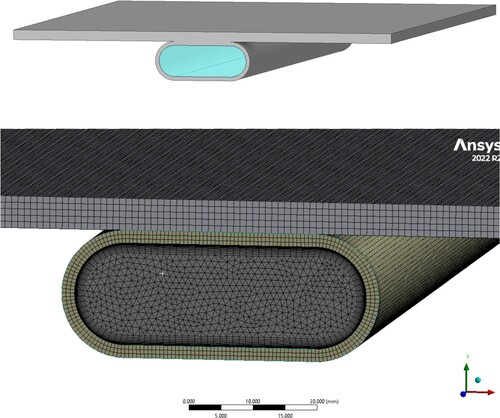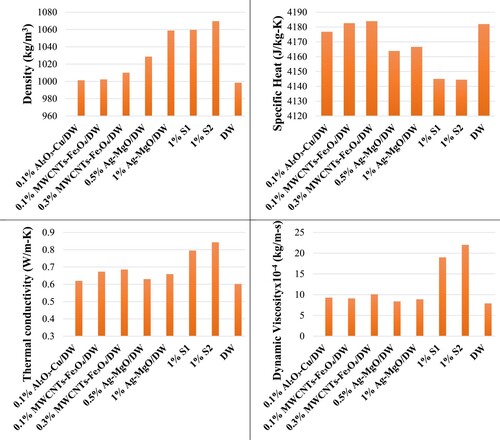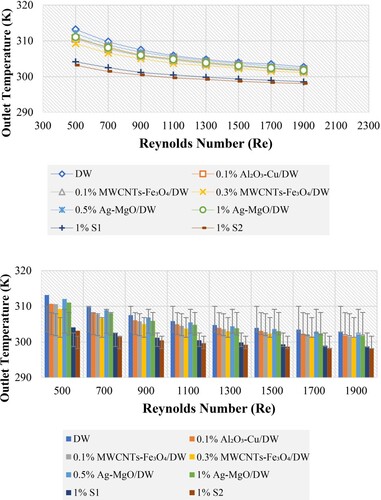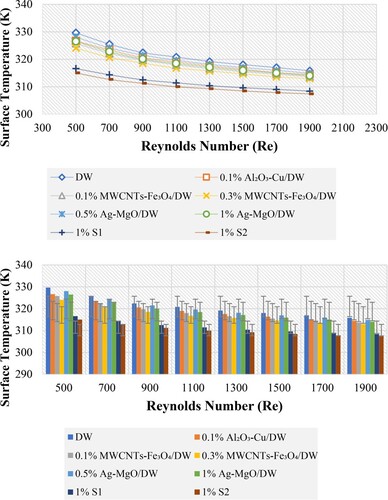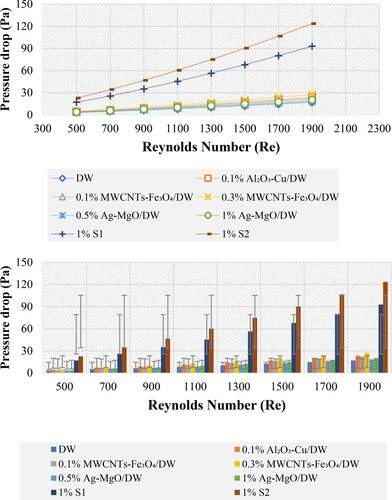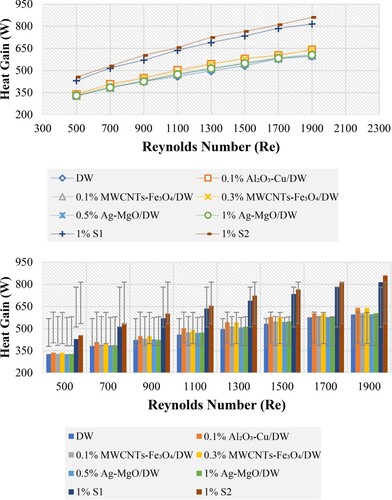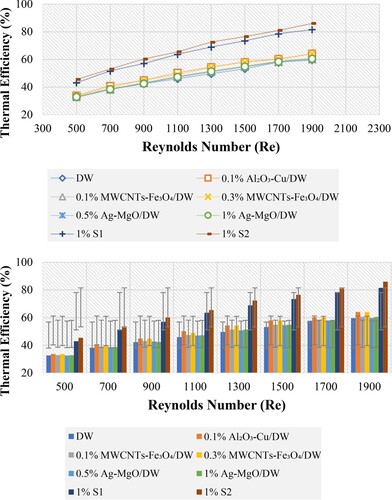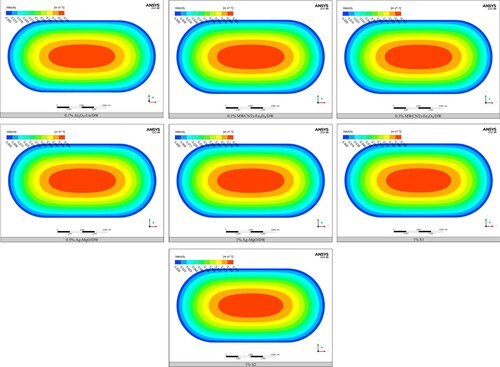Figures & data
Table 1. Previous experimental and computational studies on the use of hybrid nanofluids inside FPSCs.
Table 2. Thermo-physical properties of H2O and different types of hybrid nanofluid at 293 K (Minea, Citation2017).
Table 3. Grid independence test using different grid domains under the conditions 293 K and Reynolds number 500.
Figure 2. Comparison between the current data and the previous results of Verma et al. (Citation2018).
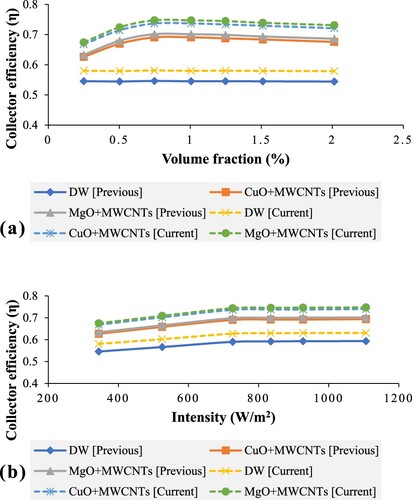
Figure 3. Comparison between the present work and the experimental results of Farajzadeh et al. (Citation2018).

Figure 7. Surface heat transfer coefficient versus Reynolds number for DW and different hybrid nanofluids.
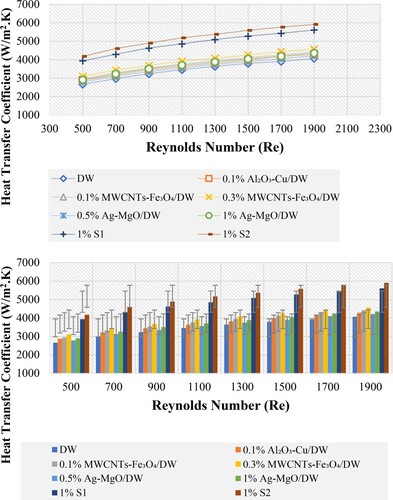
Data availability statement
The data used in this research presented in the article itself.

